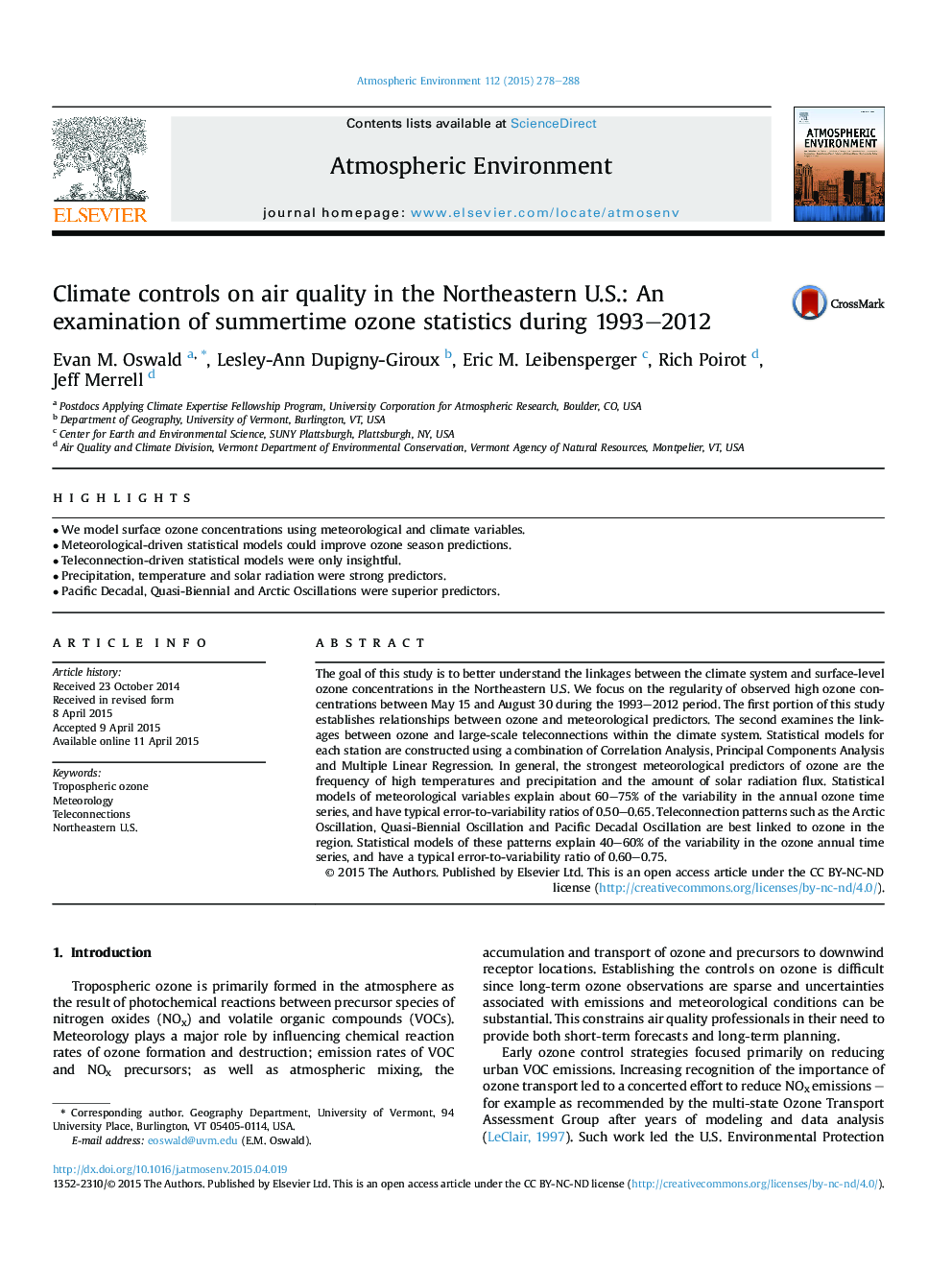| Article ID | Journal | Published Year | Pages | File Type |
|---|---|---|---|---|
| 6338092 | Atmospheric Environment | 2015 | 11 Pages |
Abstract
The goal of this study is to better understand the linkages between the climate system and surface-level ozone concentrations in the Northeastern U.S. We focus on the regularity of observed high ozone concentrations between May 15 and August 30 during the 1993-2012 period. The first portion of this study establishes relationships between ozone and meteorological predictors. The second examines the linkages between ozone and large-scale teleconnections within the climate system. Statistical models for each station are constructed using a combination of Correlation Analysis, Principal Components Analysis and Multiple Linear Regression. In general, the strongest meteorological predictors of ozone are the frequency of high temperatures and precipitation and the amount of solar radiation flux. Statistical models of meteorological variables explain about 60-75% of the variability in the annual ozone time series, and have typical error-to-variability ratios of 0.50-0.65. Teleconnection patterns such as the Arctic Oscillation, Quasi-Biennial Oscillation and Pacific Decadal Oscillation are best linked to ozone in the region. Statistical models of these patterns explain 40-60% of the variability in the ozone annual time series, and have a typical error-to-variability ratio of 0.60-0.75.
Related Topics
Physical Sciences and Engineering
Earth and Planetary Sciences
Atmospheric Science
Authors
Evan M. Oswald, Lesley-Ann Dupigny-Giroux, Eric M. Leibensperger, Rich Poirot, Jeff Merrell,
